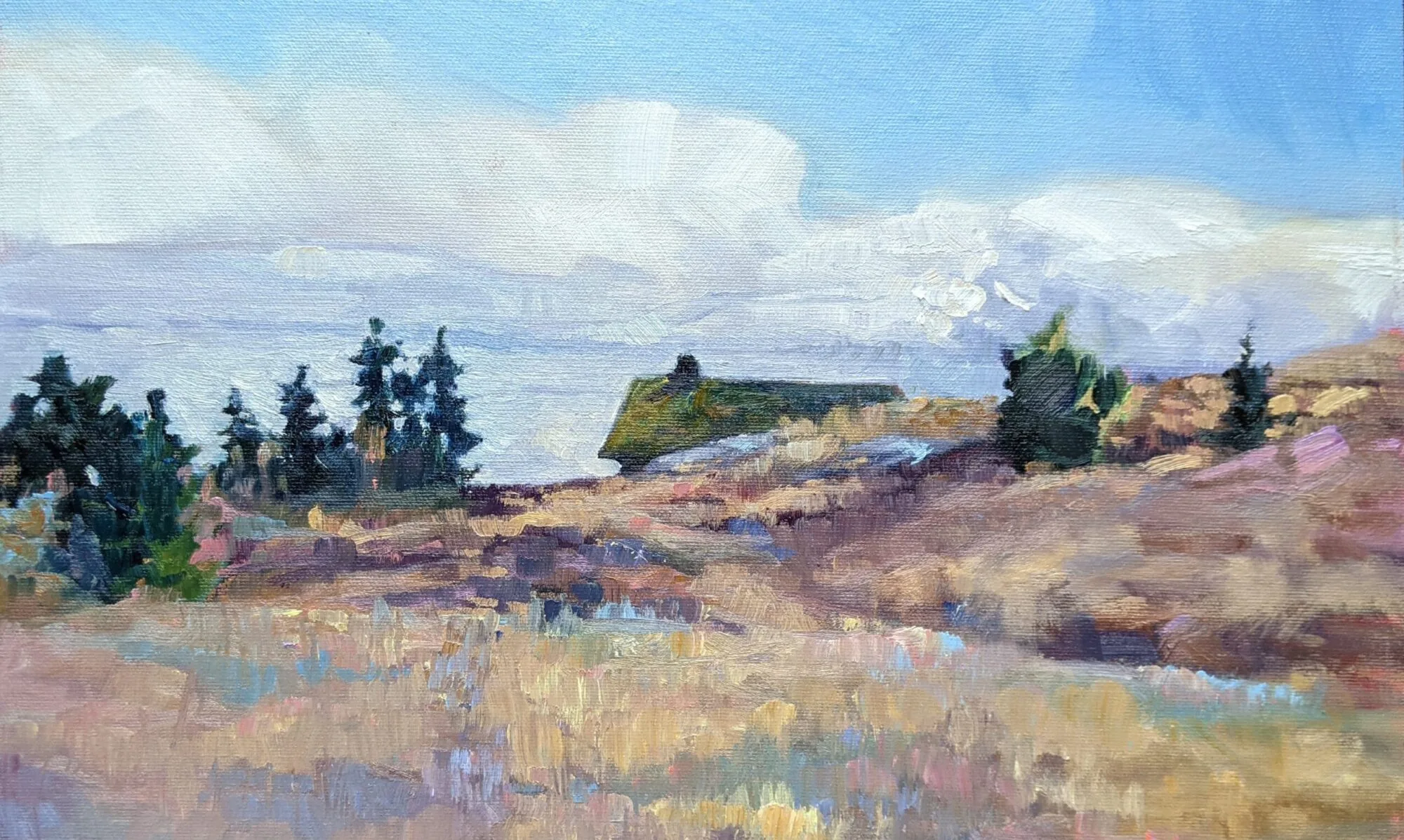Rules for working with the nude women in your life.
| Couple, by Carol L. Douglas. It’s no big deal to ask a figure model to model clothed, but it’s decidedly a big deal to ask a portrait model to strip. |
I’ve written before about working with model Michelle Long—ironically, in the wake of sex abuse allegations against photographer Terry Richardson. That was in 2014, before #metoo. Today, artist Chuck Close is in the spotlight for making models uncomfortable with inappropriate comments.
The balance of power is vastly disparate between a superstar painter and his models. However, whenever one person is clothed and the other is nude, the relationship is always unequal. Stupid comments, gestures and suggestions that would be trivial in any other setting take on different meaning when one person is clothed and the other isn’t.
| Death of Boudicca, by Carol L. Douglas |
It rolls both ways, by the way. I vividly recall a model discussing her boyfriend’s schlong from the model stand. She was never called back. There are other models whom I used downtown but not in my home studio; they creeped me out a little too much to have them know where I lived.
Michelle, of course, was always the consummate professional. That’s more than just an attitude about students; it means she could take and hold a pose, was reliable, and was a partner in the intellectual process of developing the painting.
Artnet recently published The Dos and Don’ts of Working With Nude Models: 6 Steps for Keeping Things Professional. If you work with nude models, it’s important reading.
 |
| Reclining figure, by Carol L. Douglas |
Communicate up front whether or not the model will pose nude.
The assumption for most figure-drawing classes is that the models will pose nude. For portrait classes, the assumption is that the model will be clothed. Don’t switch this around without discussion.
Don’t touch the models.
There are times you just want to grab the model’s foot and pull it forward three inches. But you simply don’t manhandle other people. Be patient. I’m not a hugger, which saves me infinite trouble. The same affectionate gesture that’s meaningless between two clothed persons is different between a model in a thin robe and a fully-clothed artist.
| The Beggar, by Carol L. Douglas |
Put the model’s comfort before the artist’s interests.
The model for The Beggar was physically strong. I expected she would tell me if she was in pain, but she didn’t. She came out of that pose in tears. That was when I realized that some models won’t complain no matter what’s asked of them; their perception of our relationship is different from mine. Never again did I ask a model to hold such a difficult pose. I also rigged up a trapeze so that models could support their bodies in vertical poses.
It ought to go without saying that you provide space heaters, you wash linens and the model stand between every session, you pad the model stand, and you provide a private changing space. You prohibit traffic in and out of the studio while the pose is in session.
Don’t ignore red flags.
I had an idea that I’d wrap my models in plastic to paint them (it didn’t work out like I thought it would). I talked about it with them beforehand, because treating a human being like a vegetable was, frankly, weird.
Decide what environment is most comfortable for you.
I know there are studios that strictly enforce a ‘no talking’ rule. That wouldn’t be mine; you try keeping high school students silent. I have ended up knowing every model I’ve worked with. They’re not slabs of meat. Other artists and models prefer silence.
Don’t take pictures.
Artnet said “don’t bring your cellphone,” but what they really mean is, “don’t take photos.” I have broken this rule when something has confused me in a live session. But I never revisited these photos anyway. Taking photos of the model is a ghastly faux pas and an invasion of the model’s privacy. It should never be done in a classroom setting. Never.
Note: I’ll be at What’s Nude in Boothbay Harbor Saturday, February 10 from 5:30 to 7:30 PM.

Interesting. Recently had a group model session and was positioned at her side with poor lighting so I could not get enough shadows to be interested in drawing her outside of my usual style. The instructor did not like my style–she wanted realism, and large. When I am not close enough to see, I cannot draw big. And without shadows I can not do realism, which I do not care for anyway. So, this model, herself a successful artist, talked the entire session, even through breaks. Very interesting conversation, too, about her art. So I did too–talked, to her. No one in the group complained, or participated in the conversation, at any time. I've always been an odd duck and it seems so is this model. I wonder if she was invited back. I wasn't. And didn't care to be. I think it was a poorly run class, Your thoughts?
NB: The Begger confuses me, and I think it is because of your words about her physical pain. I identify too much
Every classroom has dead spots and there has to be a protocol to avoid sticking it to the same person week after week. The best solution to this I've seen was in a class at the Art Students League where entry to the classroom was in groups, by alphabet. Which group went first rotated week by week.
I don't mind talk, but I know artists who can't tolerate it. The beautiful thing is when we can find a tribe in which we fit.